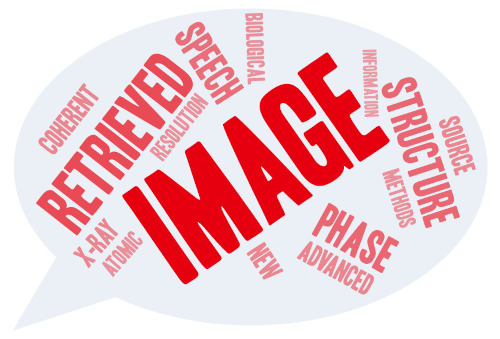Phase Retrieval in Imaging and Speech Enhancement (PRISE)

Phase Retrieval in Imaging and Speech Enhancement (PRISE)
Supervisors: Prof. Henry Chapman (DESY, UHH), Prof. Timo Gerkmann (UHH)
Advanced sources such as free-electron lasers produce intense and coherent beams of X-rays, opening up new possibilities to image biological materials, such as single molecules, at atomic resolution. Since atomic resolution lenses do not exist, such methods usually rely upon retrieving the structural information encoded in the far-field coherent diffraction pattern [1]. This intensity pattern corresponds to the Fourier magnitude of the object and is thus an incomplete measurement since the phase of the diffracted wave cannot be measured. The missing phase information needs to be retrieved to reconstruct the original structure. A very similar problem of phase retrieval, which has recently received increasing attention [2], is encountered in speech source separation and enhancement. In the last few years, modern machine learning methods have been successfully applied to the problem, aiming to obtain faster and more accurate results.
The goal of this project is to explore and extend common concepts in X-ray imaging and speech enhancement. Recent advances in the application of machine learning in speech analysis will be transferred and tailored to X-ray imaging, obtaining deeper insights into this challenging inverse problem and providing new opportunities for high-resolution structure determination of biological systems.
[1] Y. Shechtman, Y. C. Eldar, O. Cohen, H. N. Chapman, J. Miao, and M. Segev, "Phase Retrieval with Application to Optical Imaging: A contemporary overview," in IEEE Signal Processing Magazine, vol. 32, no. 3, pp. 87-109.
[2] T. Gerkmann, M. Krawczyk-Becker, and J. Le Roux, "Phase Processing for Single-Channel Speech Enhancement: History and recent advances," in IEEE Signal Processing Magazine, vol. 32, no. 2, pp. 55-66.
Requirements:
- Master's degree in computer science, physics, electrical engineering, or comparable
- proficient in Python and familiar with modern libraries for machine learning
- experienced with PyTorch for deep learning and machine learning applications
- experience in signal processing and/or computational imaging
Position:
- University of Hamburg
- 100% EGR. 13 (TV-L) position for three years
The University of Hamburg is committed to equity. Diversity enriches our university life, whether in our studies, research, teaching, education, or workplace. We therefore welcome all applications, regardless of gender, gender identity, sexual orientation, ethnic or social background, age, religion or belief, disability, or chronic illness.
The University of Hamburg strives to increase the number of women in academia, and encourages qualified female academics to apply.
Severely disabled and disabled applicants with the same status will receive preference over equally qualified non-disabled applicants.